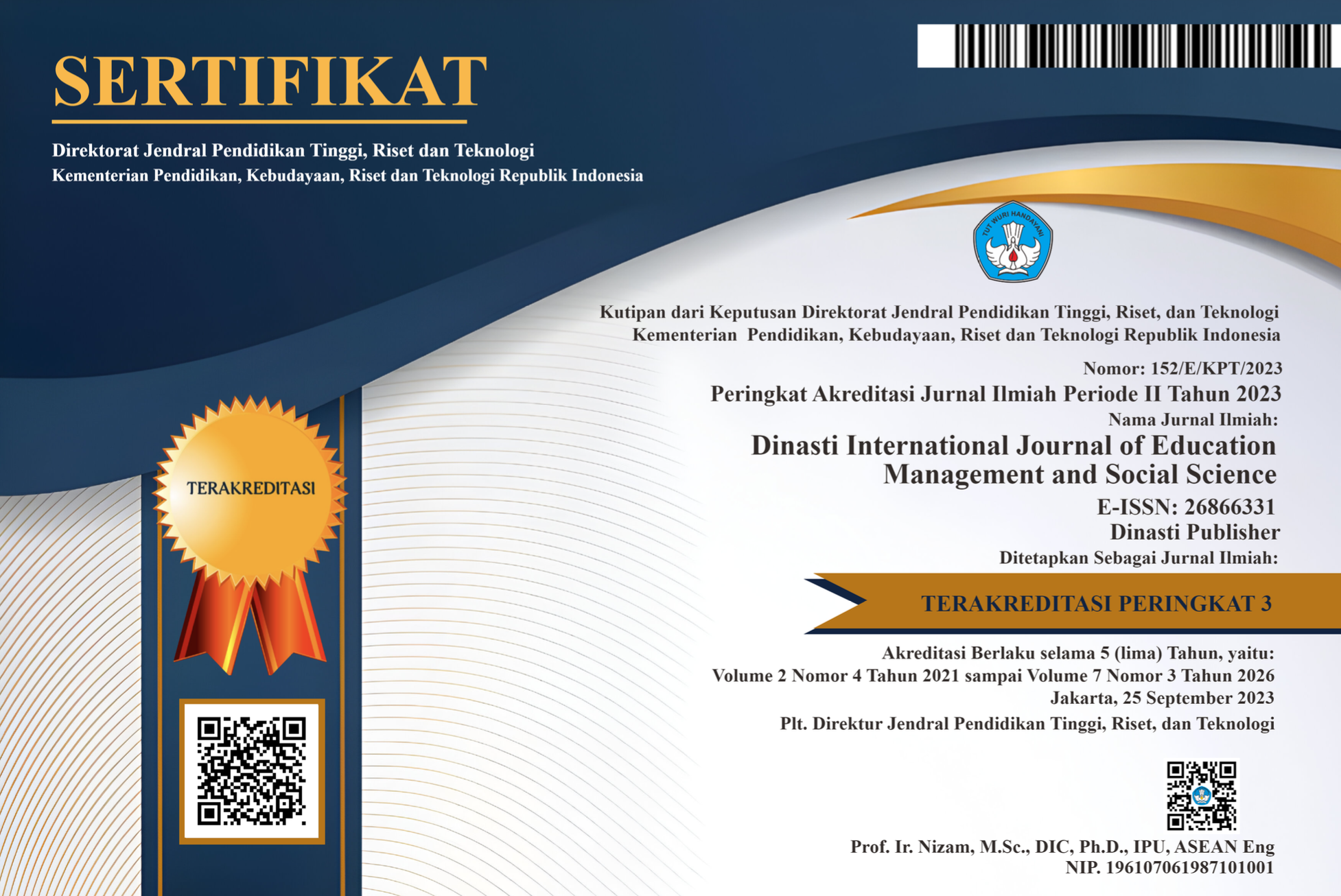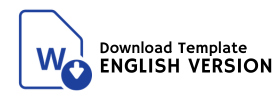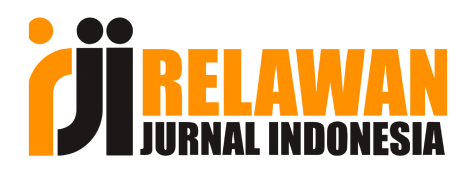Stakeholder Management Innovation in the Utilization of Right-of-Way on Major Arterial Roads in Bogor Regency
DOI:
https://doi.org/10.38035/dijemss.v6i5.4644Keywords:
Right of Way, Stakeholder Management, Risk ControlAbstract
The development of major arterial roads and pedestrian infrastructure in the Cibinong Raya area to prepare for hosting the U-20 World Cup in 2023, is a leading program that uses up to 30% of the Bogor Regency infrastructure budget. Development with a large budget requires appropriately applied stakeholder management of infrastructure assets, through supervision and control of road assets accommodated in the licensing activities for using the right-of-way, to reduce the risk of physical damage to assets due to violations. The Result-Based Management Model was used to evaluate the control of asset utilization in providing technical recommendations for right-of-way utilization. Then, through ordinal scale weighting followed by in-depth interviews, an innovation model for stakeholder management risk control was obtained that is appropriate for the use of right-of-way on major arterial roads in Bogor Regency. The weighting of the stakeholder management indicators showed that the risk control aspect was the weakest element so it was necessary to emphasize the integration of the Risk Control function into each management indicator.
References
Adey, B. T., Klatter, L., & Hajdin, R. (2020). Defining road service to facilitate road infrastructure asset management. ICE Publishing.
Almeida, F., Ferreira, M., & Bento, P. (2022). A conceptual construct on value for infrastructure asset management. Utilities Policy, 74, 101335.
Bieda, A., Furs, D., & Lewi?ska, A. (2017). Possibilities of spatial data to determine the extent of the occupancy of the right-of-way by large-format advertisements. Real Estate Management and Valuation, 25(2), 45–56.
Bowen, G. A. (2017). Document analysis as a qualitative research method. Qualitative Research Journal, 9(2), 27–40.
Braun, V., & Clarke, V. (2019). Reflecting on reflexive thematic analysis. Qualitative Research in Sport, Exercise and Health, 11(4), 589–597.
Bryman, A. (2016). Social research methods (5th ed.). Oxford University Press.
Bryson, J. M. (2004). What to do when stakeholders matter: Stakeholder identification and analysis techniques. Public Management Review, 6(1), 21–53.
Caesar, Q. T., Krugler, P. E., & Yurek, J. (2004). Issues in automating utility permits at transportation agencies. Transportation Research Record.
Chen, Z., Wang, S., & Zhang, X. (2019). An interdependent infrastructure asset management framework for high-density cities. Proceedings of the Institution of Civil Engineers - Municipal Engineer, 172(1), 3–15.
Creswell, J. W., & Poth, C. N. (2018). Qualitative inquiry and research design: Choosing among five approaches (4th ed.). SAGE Publications.
Denzin, N. K., & Lincoln, Y. S. (2018). The SAGE handbook of qualitative research (5th ed.). SAGE Publications.
Freeman, R. E. (2010). Strategic management: A stakeholder approach. Cambridge University Press.
Gardoni, P., Murphy, C., & Bashaw, E. C. (2020). Infrastructure resilience: A risk-based framework. Springer.
GFMAM. (2016). The asset management landscape (2nd ed.). Global Forum on Maintenance and Asset Management.
Hadi, D., Riyanto, B., & Astuti, N. (2018). Penyelenggaraan perizinan pemanfaatan bagian-bagian jalan nasional. Jurnal Transportasi.
Khan, M. W. (2021). Stakeholder management and infrastructure project success. International Journal of Project Management, 39(5), 433–446.
Malodia, S. (2021). Future of e-Government: An integrated conceptual framework. Technological Forecasting and Social Change, 170, 120894.
Martinsuo, M., & Killen, C. P. (2014). Value management in project portfolios: Identifying and assessing strategic value. Project Management Journal, 45(5), 56–70.
Maurizka, D. A. (2022). Pemanfaatan ruang milik jalan tol oleh usaha mikro, kecil, dan menengah. Jurnal Perspektif.
Miles, M. B., Huberman, A. M., & Saldaña, J. (2018). Qualitative data analysis: A methods sourcebook (4th ed.). SAGE Publications.
Muthmainnah, R., Rahman, A., & Maulana, F. (2019). Keterlibatan pemerintah dalam pengelolaan sumber daya bersama. Jurnal Ilmu Administrasi, 16(1), 33–45.
Nowell, L. S., Norris, J. M., White, D. E., & Moules, N. J. (2017). Thematic analysis: Striving to meet the trustworthiness criteria. International Journal of Qualitative Methods, 16(1), 1–13.
Parera, M., Widyawati, F., & Hamid, R. (2022). Koordinasi pemangku kepentingan dalam tata kelola sumber daya infrastruktur. Jurnal Administrasi Publik, 19(2), 112–126.
Parlikad, A. K., & Jafari, M. (2016). On the role of asset management in infrastructure resilience. Journal of Infrastructure Systems, 22(1), 02515001.
Park, J., Lee, K., & Kim, H. (2016). Infrastructure and economic development: Empirical evidence from Korea. Journal of Economic Policy, 21(2), 45–62.
Patton, M. Q. (2015). Qualitative research and evaluation methods (4th ed.). SAGE Publications.
Rajablu, M. (2014). Managing stakeholder relationships in public infrastructure projects. Journal of Project Management, 7(4), 35–42.
Rajablu, M., Marthandan, G., & Yusoff, W. F. W. (2017). Managing stakeholder relationships in mega infrastructure projects: The role of stakeholder engagement. Journal of Engineering and Applied Sciences, 12(19), 4959–4966.
Rajagopal, A. (2004). A rational permit fee structure for the street right-of-way permit program. Public Works Management & Policy, 9(1), 3–14.
Selvik, J. T., Aven, T., & Vinnem, J. E. (2021). On the use of criteria based on the SMART acronym to assess quality of performance indicators for safety management in process industries. Safety Science, 144, 105499.
Sinha, K. C., & Labi, S. (2017). Transportation infrastructure asset management in the new millennium: Continuing issues, and emerging challenges and opportunities. Transportmetrica, 13(3), 187–199.
Tirwaningsih, T., Widodo, A., & Rochman, A. (2015). Efektivitas pemungutan retribusi ruang milik jalan (right-of-way) untuk meningkatkan pendapatan asli daerah Bogor Regency. Jurnal Living Law, 7(2), 120–135.
UNDP. (2009). Handbook on planning, monitoring and evaluating for development results. United Nations Development Programme.
UNDP. (2017). Results-based management handbook. United Nations Development Programme.
Valenzuela, M., Rojas, E., & Arce, C. (2017). Evaluating pedestrian infrastructure through asset management systems. Journal of Transportation Engineering, 143(9), 04017037.
Woodhouse, J. (2014). Asset management decision-making and the value concept. In Proceedings of IAM Annual Conference.
Xu, X., Li, H., & Wang, J. (2020). Automating utility permitting within highway right-of-way via a generic UML/OCL model and natural language processing. Journal of Computing in Civil Engineering, 34(3), 04020015.
Zhong, C., Arisona, S. M., Huang, X., Batty, M., & Schmitt, G. (2019). Detecting the dynamics of urban structure through spatial network analysis. Environment and Planning B: Urban Analytics and City Science, 46(7), 1250–1268.
Downloads
Published
How to Cite
Issue
Section
License
Copyright (c) 2025 Ayu Permata Pekerti, Anang Muftiadi, Emma Rochima

This work is licensed under a Creative Commons Attribution 4.0 International License.
Authors who publish their manuscripts in this journal agree to the following conditions:
- The copyright on each article belongs to the author(s).
- The author acknowledges that the Dinasti International Journal of Education Management and Social Science (DIJEMSS) has the right to be the first to publish with a Creative Commons Attribution 4.0 International license (Attribution 4.0 International (CC BY 4.0).
- Authors can submit articles separately, arrange for the non-exclusive distribution of manuscripts that have been published in this journal into other versions (e.g., sent to the author's institutional repository, publication into books, etc.), by acknowledging that the manuscript has been published for the first time in the Dinasti International Journal of Education Management and Social Science (DIJEMSS).















































